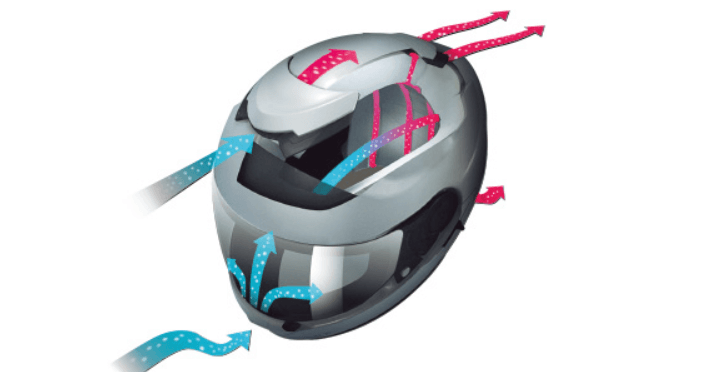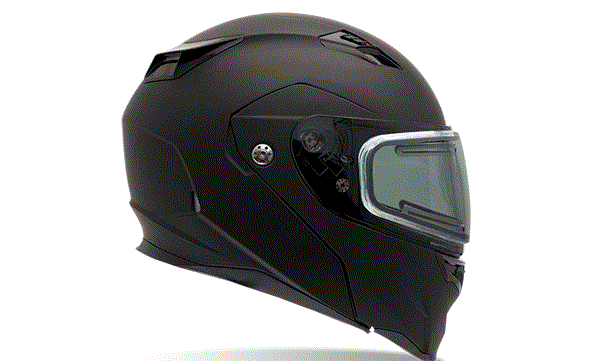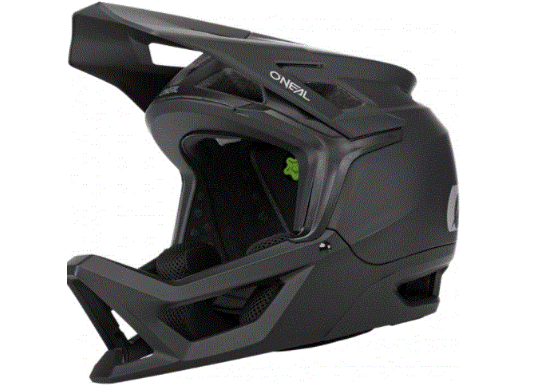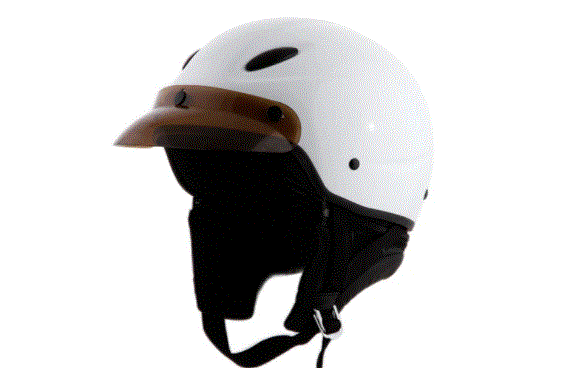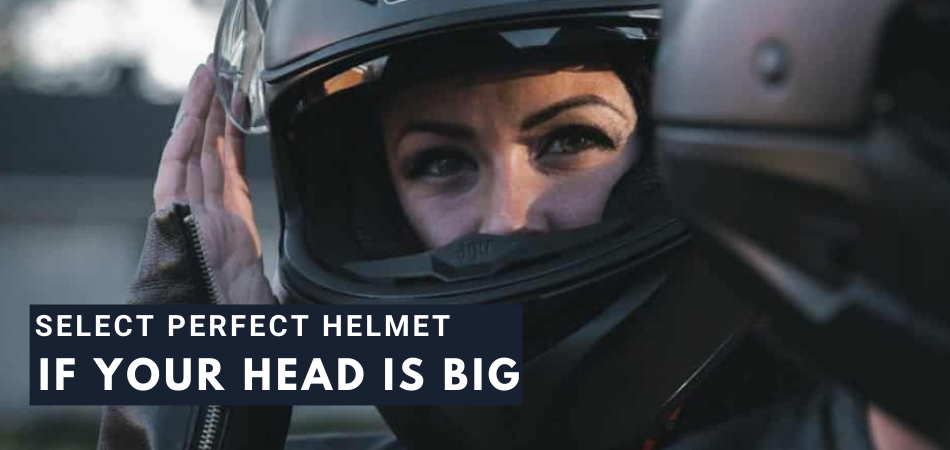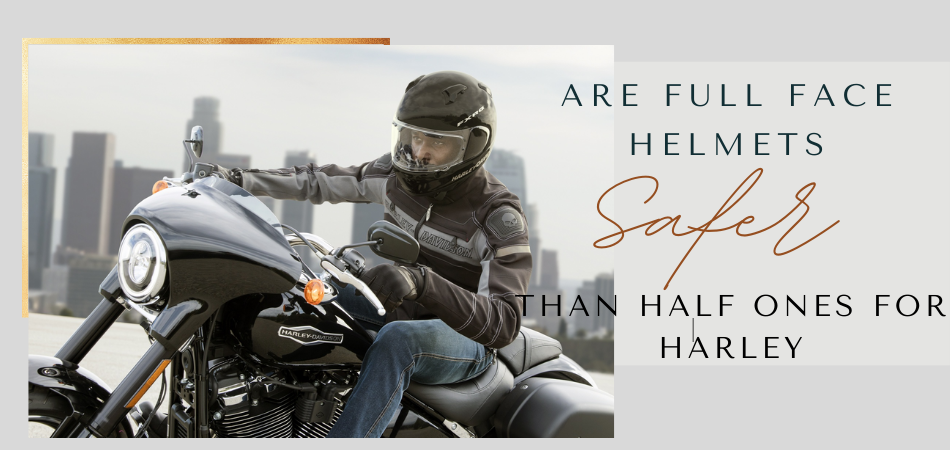Motorcycle cycle helmets are one must-have gear to ride a bike. It protects the head from direct harm if any accident might hurt the head. We know motorcycle helmets to have stuffy interiors, and in the actual sense, this can be a heat conductor. Excess heat in the head can make using the helmet distressing.
So, do motorcycles helmets have ventilation? Motorcycle helmets have ventilation, although not all helmets do. So, when you wear a ventilated helmet, there is no fear of excess heat making you uncomfortable.
Let’s take you through why you need good helmet ventilation and the types of ventilated motorcycle helmets available. We will also inform you of the benefits of wearing a ventilated motorcycle helmet. Continue reading to learn more.
Why Do You Need Good Helmet Ventilation?
You need good helmet ventilation for many things, and the most important of all is to reduce head heat while you are riding. Helmets with ventilations have holes to allow airflow in and out of it. Some people are naturally sweaty, and such persons cannot use a helmet that is not ventilated.
The more your body gets in motion, the faster it generates heat, and heat generates sweat. Excessive sweat in a material like the one in the helmet can cause it to smell terrible, and that is one thing everyone wants to avoid.
Do Motorcycle Helmets Have Ventilation?
Although many motorcycle helmets don’t have ventilation, most newly manufactured helmets do. Helmets have two or more holes at their top or their front. The holes allow air to go in and out for the helmet to cool the head.
A ventilated motorcycle helmet is not common to find in some areas. However, some places have a surplus. Initially, motorcycle helmets didn’t have ventilation. It was harder to wear helmets for a long time while cycling.
It is even worse when the sun is out. The heat sometimes gets unbearable, and users get real sweaty quickly. Also, the helmet smells fast because of the sweat that develops and stays in the helmet. Until manufacturers made holes on helmets for ventilation.
Spot Where the Helmet Ventilation Are
Contrary to popular belief, helmets ventilations are not always at the top of the helmet. Manufacturers spread the ventilation through other components and positions in the helmet.
At the top
The top of a helmet is the most likely place to find ventilations. Manufacturers make holes at the top of the helmet to let air into the helmet. Some helmets make it so that users can close the holes when necessary, while in others, they leave it permanently open. However they make it, it still does the job they made it to do.
At the front
Open-face and half helmets are most likely to have this kind of ventilation. Here, the ventilation holes are at the front of the helmet at just a few meters off the visor. These holes are usually not as big as the ones at the top.
At the back
For an obvious reason, people call the ventilation space in the back of the helmet heat exhaust. The space doesn’t necessarily allow air in. Its job is to let hot air out and keep the helmet interior heat-free.
At the chin bar
Although helmets with vent at only the chin bar are still hot, the heat is not as severe as when there is no vent. The chin bar is at the mouth region, and air flowing through it cools the face, and they don’t do much on the head. So, manufacturers, regardless of the chine bar vents, mostly make other ventilations holes for the head.
Types of Ventilation Motorcycle Helmet
Based on different people’s preferences, ventilated motorcycle helmet comes in different types, just like the regular motorcycle helmet. The types of ventilated motorcycle helmets include:
1. Full-face Ventilated Motorcycle Helmet
The full-face motorcycle helmet is the most common ventilated helmet for power bike owners. However, it works for all riders, regardless of the motorcycle they ride. Sport motorcycle riders and even bicycle riders can use the helmet. The helmet has coverage from your head through to your neck, and, in most cases, your mouth is hardly out.
A full-face helmet has glass to protect your eyes from dust or any incoming object while you are riding. The helmet covers your chin, making it one safest type of helmet amongst others. In addition, the helmet has holes in a strategic place that allows air in and out of it. So, with all the helmet’s coverage, the heat is still subdued to a minimum level for riders to feel comfortable for as long as they are putting it on.
Key features of the full-face ventilated motorcycle helmet
- Aside from head protection, which every other helmet has, the full-face helmet has a chin bar that protects the chin. Most accidents can affect the chin even more than the head, but people on the full-face helmet are safe.
- The helmet has ventilation. The holes in strategic spots at the top of the helmet serve as ventilation to reduce heat sweat evaporation. Also, the holes serve as a fog reduction mechanism.
- You can reduce or close the ventilation space on wintry days to avoid too much cold penetrating the helmet.
- In recent times, manufacturers have been able to add other features like high-visibility design and Bluetooth tools. Also, they have made the helmet visor to fine-tune to sunlight rays.
2. Modular Ventilated Motorcycle Helmet
People also know modular helmets as flip-up helmets. This helmet has similar looks and features to the full-face helmet. The difference between both helmets is that the modular helmet allows users to flip up the chin bar and visor at will. But, the full-face helmet has a stagnant chin bar and a moveable visor.
A modular helmet is also one safest helmet, but the full-face is safer because of the flip-up option. Since you cannot tell when an accident will happen, and you cannot be too careful, the flip-up option might be a disadvantage. So, we advise that you only use the flip-up alternative when you are not riding. It also has holes at the top for breathability.
Key features of the modular ventilated motorcycle helmet
- Modular helmets have more weight than other helmets because of the extra technology for the flip-up section.
- Although the helmet is safer than many others, there is a slight reduction of safety for riders because of the added flip-up option.
- The helmet has two visors. It has a primary visor and a secondary internal visor for enhanced protection for the eye from the sun.
- The moveable chin bar is also an added advantage when you are not riding. It allows more air into the helmet and makes it easier to take off.
- Manufacturers have coated the primary visor with an anti-fogging mechanism. So, aside from the ventilation, the helmet has to reduce fog, and the coating also makes the reduction.
- Ventilations are inculcated with holes at the top of the helmet.
- The helmet has Bluetooth speakers in it for users who love music.
3. Off-road Ventilated Motorcycle Helmet
The off-road helmet is mostly used off the road. The helmet is suitable for mountain riders and other off-road riders. Although some city riders use it, it is still not the best helmet. They mostly don’t have visors for eye protection, so users often wear eyeglasses when riding.
Riders riding against mud might find a disadvantage on the helmet. The helmet has head and chin protection with its chin bar, leaving the eyes unprotected.
Key features of the off-road ventilated motorcycle helmet
- Odd-road helmets are lightweight. The helmet promotes long hours of usage without placing stress on the head or neck of its users. So, users do not have a problem wearing this helmet to travel long distances.
- The helmet has chin bars for chin protection, and a few of them have visors for eye protection.
- It has perfect ventilation holes. The heat in an off-road helmet is minimized because of its lightweight nature and the hole at the top of it.
4. Open-face Ventilated Motorcycle Helmet
Just as the name implies, the open-face helmet is open, and it doesn’t have a chin bar, and most of them have visors. People also know this helmet as the 3/4 helmet. The helmet protects your head and sides and leaves your face and chin unprotected. This helmet is less safe for riders, but the good news is that highway riders rarely use it.
Key features of the open-face ventilated motorcycle helmet
- An open-face helmet is slightly lightweight than a full-face helmet. This lightweight trait is because of the absence of a chin bar in the helmet.
- They either have a full-face or half visor to protect the rider’s eye from incoming objects while they are riding.
- The openness of this helmet makes enough ventilation, but it still has holes at the top for extra ventilation. This trait makes it bad for cold seasons and perfect for the hot seasons.
5. Dual-sport Ventilated Motorcycle Helmet
Manufacturers design the dual-sport helmet with a combination of the full-face helmet and off-road helmet design. The dual-sport helmet’s visor is bigger than the full-face helmet’s visor, and the visor has flip-up technology. The visor is tight, and the wind cannot make the visor flip up at high speed.
Dual-sport helmets are round and fitting to the head as it covers the head, face, sides, and chin. The helmet does not have a protruding chin bar, unlike other helmets. It has lesser airflow than other helmets, save for the ventilation holes at the top.
Key features of the dual-sport ventilation motorcycle helmet
- Dual-sport helmets have larger visors, making the chin bar go lower than other helmets. It has the potency of protecting your neck from scratch in an accident.
- The helmet has more stuffing in the interior than other helmets for enhanced comfort for users.
- You can use the dual-sport helmet for on-road and off-road riding activities. You can maximize this feature on roads with streets and grumpy areas.
6. Half Ventilated Motorcycle Helmet
A half helmet is one with the most minimum protection as it only protects your head and forehead. The helmet covers from the forehead to the head and just a little below the back of the head. It leaves a little above your neck, side, face, and chin open.
The half helmet has a strap to keep it on your head for as long as you want to keep it on, and the strap goes below the chin. The good thing about his helmet is that its ventilation doesn’t need to come from the ventilation hole. The space in the face, neck, chin, and sides allows enough air to flow through.
Key features of the half ventilated motorcycle helmet
- Half helmets mostly do not have visors, so we advise users to get suitable glasses to protect their eyes when they are riding.
- The helmet offers little space for technological improvements.
- The ventilation holes in half helmets are mostly at the front of the helmet.
Benefits of Wearing a Ventilated Motorcycle Helmet
Head protection
This benefit is not particular for ventilated motorcycle helmets but is also a benefit of the helmet. Helmets generally protect people from head injuries in accidents.
Visor fog reduction
Although helmets like modular helmets have fog protection on the visors, ventilation on the helmet still helps reduce fog. When the helmet is tight closed, the breathing can cause fog on the visor because there is hardly space for the carbon dioxide to escape. So, they stay in and form the fog on the visor. But, when the helmet has ventilation holes on it, the breath has an escape route. Hence, the fog reduction.
Heat reduction
The ventilation holes on the helmet allow airflow through the helmet. The holes allow heat to leave and let cool air in. With this, you can use the helmet for a long time without feeling the heat you would feel in a non-ventilated helmet.
Stink reduction
When sweat stays on a stuffy material for a long time, it stinks. Since the ventilation holes reduce heat, it means you won’t sweat much in the helmet. So, the helmet will not stink much, as if it wasn’t a ventilated helmet.
Frequently Asked Questions
Are ventilated helmets quieter than non-ventilated ones?
The quietness of a helmet does not have much to do with whether it is ventilated or not. What qualifies a helmet as quiet or not is whether it covers the face fully. The holes on ventilated helmets are not big enough to let noise through. The helmet ranked as the quietest helmet is a modular helmet, and it is a ventilated helmet.
Conclusion
For many reasons, people need motorcycle helmets that are ventilated. So, they often ask, “Do motorcycle helmets have ventilation?” The good news is that motorcycle helmets have ventilation, but they are more non-ventilated helmets out there than ventilated ones. Ventilated motorcycle helmets have proven to have more advantages than non-ventilated helmets.


